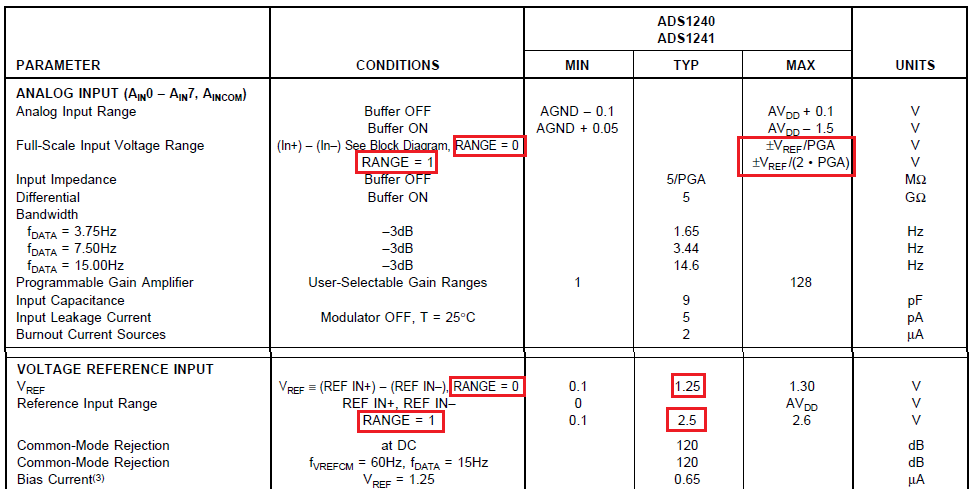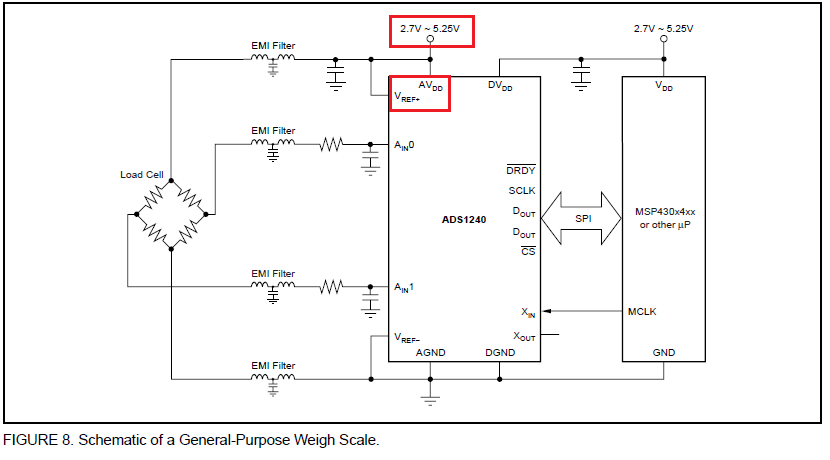Dear Technical Support Team,
I have some questions about ADS1240.
1.)
Datasheet shows following specs for AVDD=3V.
Dose it means that input fullscale range always 1.25V?
RANGE = 0 ±VREF/PGA V ←Vref should be 1.25v on datasheet. PGA=1
RANGE = 1 ±VREF /(2 • PGA) ←Vref should be 2.5V on datasheet. PGA=1
Customer's condition is following and they would like to input 2.5V full-scale.
AVDD=3.3V、VREF=2.5V、RANGE=1、PGA=1、between Ain1 and AinCOM(GND)、format=unipolar
Following shows "FIGURE 8". It connect same voltage for AVDD and Vref.
Is Vref over voltage(such as 2.7V and 5.5V) for datasheet spec?
Best Regards,
y,i



